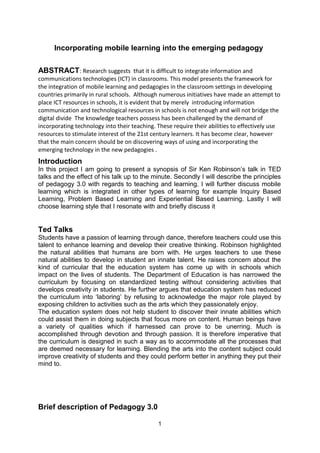The document discusses incorporating mobile learning into emerging pedagogies. It presents a framework for integrating mobile learning and pedagogies in classroom settings, especially in rural schools in developing countries. It discusses how pedagogy 3.0 utilizes new technologies and participatory learning approaches. The document also examines inquiry-based learning, problem-based learning, and experiential learning approaches and how mobile learning can be incorporated into each. The author resonates most with experiential learning due to its hands-on nature and potential for enhanced mobile learning experiences.










